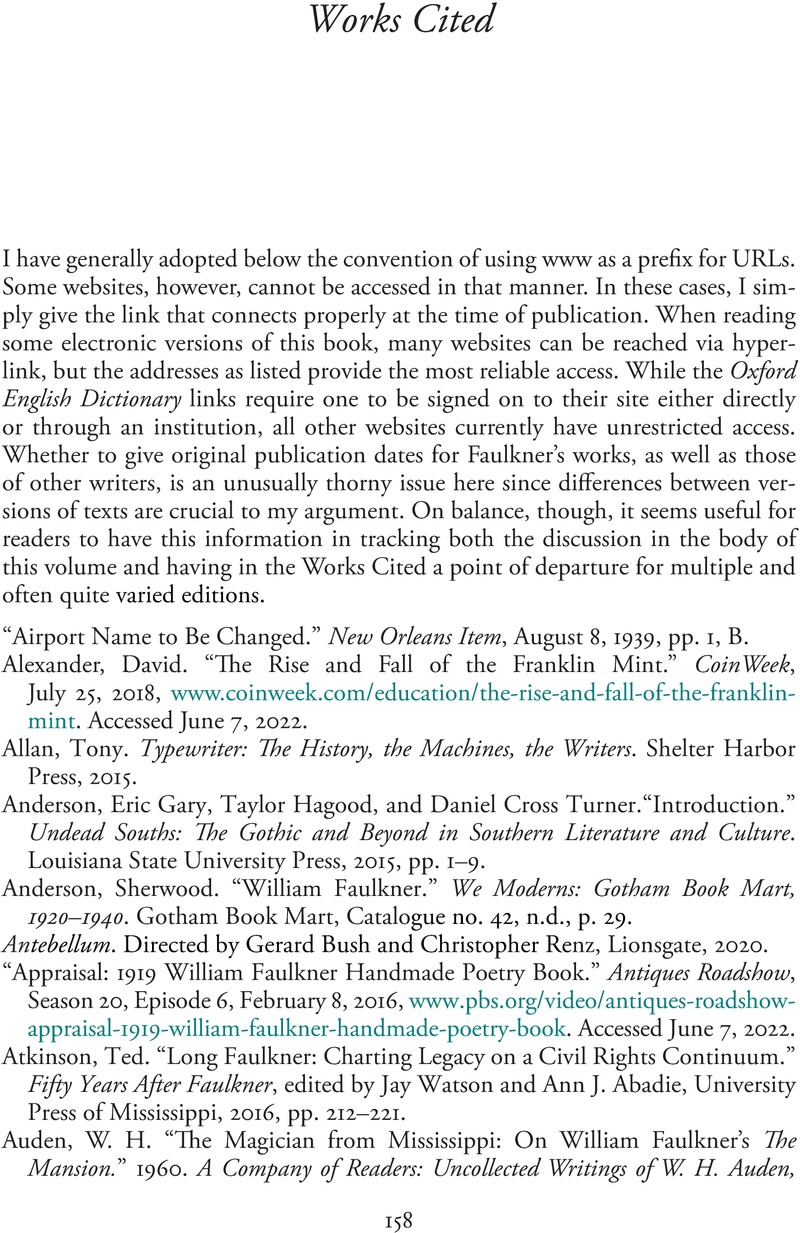Book contents
- William Faulkner and the Materials of Writing
- William Faulkner and the Materials of Writing
- Copyright page
- Contents
- Acknowledgments
- Introduction
- Chapter 1 Not Even Past: Media, History, and Repurposing the Text
- Chapter 2 Parchment Bodies: Race and Writing Materials
- Chapter 3 Inkwell Eyes: Writing, Gender, and the Body
- Chapter 4 Circuits of Media: Airplanes, Newspapers, and the Afterlife of Novels
- Chapter 5 On Carpentry: Religion and the Question of Literature
- Chapter 6 From Ivory to Foolscap: Writing and Intimacy
- Works Cited
- Index
- References
- William Faulkner and the Materials of Writing
- William Faulkner and the Materials of Writing
- Copyright page
- Contents
- Acknowledgments
- Introduction
- Chapter 1 Not Even Past: Media, History, and Repurposing the Text
- Chapter 2 Parchment Bodies: Race and Writing Materials
- Chapter 3 Inkwell Eyes: Writing, Gender, and the Body
- Chapter 4 Circuits of Media: Airplanes, Newspapers, and the Afterlife of Novels
- Chapter 5 On Carpentry: Religion and the Question of Literature
- Chapter 6 From Ivory to Foolscap: Writing and Intimacy
- Works Cited
- Index
- References
Summary

- Type
- Chapter
- Information
- William Faulkner and the Materials of Writing , pp. 158 - 180Publisher: Cambridge University PressPrint publication year: 2023



